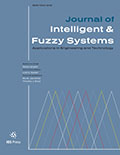Authors: Elsabagh, M.A. | Emam, O.E. | Medhat, T. | Gafar, M.G.
Article Type:
Research Article
Abstract:
By anticipating system defect-prone units, software-developing businesses aim to increase the quality of software. Despite the development of numerous Data Mining (DM) and Artificial Intelligence (AI) techniques in the Software Defect Prediction (SDP) field, dealing with the uncertainty of datasets persists due to noise, data distribution, class overlapping, proposed model parameters, and old data. This uncertainty issue has a negative impact on the accuracy of software defect prediction. To overcome this limitation, a model-based hybridization of Ant Colony Optimization-inspired Fuzzy Rough Feature Selection (FRAC) followed by adapting the parameters of Adaptive Neuro-Fuzzy Inference System (ANFIS) with a novel algorithm called
…Turbulent Flow of Water Optimization (TFWO) is recommended. The proposed model (FRAC+TFWANFIS) performed better than contemporary literature and other optimization algorithms in SDP, such as Ant Colony Optimization (ACO), Differential Evolution (DE), ANFIS, Grey Wolf Optimization (GWO), Particle Swarm Optimization (PSO), and Genetic Algorithm (GA). Also, the performance of the proposed model is superior to that of other conventional classification techniques such as Naïve Bayes (NB), Logistic Regression (LR), Multilayer Perceptron (MLP), Support Vector Machine (SVM), Fuzzy Rough Nearest Neighbor (FRNN), Fuzzy Nearest Neighbor (FNN), Bagging, C4.5, Random Forest (RF), and K-Nearest Neighbor (K-NN). Two datasets, PC3 and PC4, with large dimensions from the OPENML platform are used. The experiments are applied with regard to accuracy, Standard Deviation (SD), Root Mean Square Error (RMSE), Mean Square Error (MSE), and other measurement metrics. The uncertainty issue is addressed by the (FRAC+TFWANFIS) model with accuracy 90.8% and 91.1% for PC3 and PC4, respectively.
Show more
Keywords: Adaptive Neuro-Fuzzy Inference System (ANFIS), Turbulent Flow of Water Optimization Algorithm, Software Defect Prediction (SDP), Recent and Conventional Optimization Algorithms, Uncertainty of SDP.
DOI: 10.3233/JIFS-234415
Citation: Journal of Intelligent & Fuzzy Systems,
vol. Pre-press, no. Pre-press, pp. 1-21, 2024
Price: EUR 27.50





